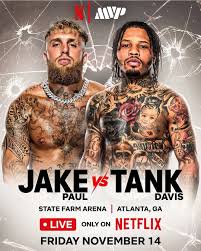
Introduction
In recent years, Jake Paul has emerged as a significant figure in both the entertainment and sports industries. Initially gaining fame through his YouTube channel, where he showcased pranks and vlogs, Paul has successfully transitioned into a professional boxing career. His rise has sparked debates about the intersection of social media influence and traditional sports, making him a topic of interest among fans and critics alike.
The Journey to Boxing
Jake Paul initially captured attention not just for his antics on social media but also for his unique ability to engage with a younger audience. His YouTube channel boasted millions of subscribers, but it was his foray into boxing that truly propelled him into the limelight. In January 2020, Paul participated in his first official boxing match, defeating fellow YouTuber AnEsonGib. This event marked the beginning of a new chapter in his career.
Fast forward to 2023, and Jake Paul has fought several high-profile matches against professional athletes, including former MMA champions like Tyron Woodley and Anderson Silva. His bouts have generated significant viewership, illustrating the potential for unconventional paths to success in the sports arena. Notably, Paul has also secured deals that have made him one of the highest-paid athletes per fight, highlighting the lucrative opportunities available in this modern sporting landscape.
Impact on Boxing and Social Media
Jake Paul’s influence reaches beyond just his boxing prowess. He has effectively utilized social media platforms to promote his fights and maintain public interest. By engaging in trash talk, behind-the-scenes content, and interacting with fans, Paul has created a brand that attracts attention, sells tickets, and draws pay-per-view audiences. This strategy has sparked a discussion regarding the future of boxing: Are traditional pathways to stardom being overshadowed by social media-driven personalities?
Critics argue that Jake Paul’s prominence may undermine the sport’s legitimacy, as he has primarily utilized his fame rather than traditional boxing credentials to gain recognition in the ring. Nevertheless, his impact on the industry cannot be dismissed. By bringing a new audience to boxing, he has rekindled interest in the sport among younger viewers who may have previously been indifferent towards boxing.
Conclusion
As Jake Paul continues to evolve as both a boxer and an influencer, the implications of his career choices will resonate within the sports world and beyond. Whether viewed as a controversial figure or a savvy entrepreneur, his journey showcases the changing dynamics of fame and success. Looking ahead, it will be intriguing to see how he further impacts both boxing and social media culture, as well as what new opportunities he will pursue in the future. One thing is certain: Jake Paul is a name that is here to stay.



